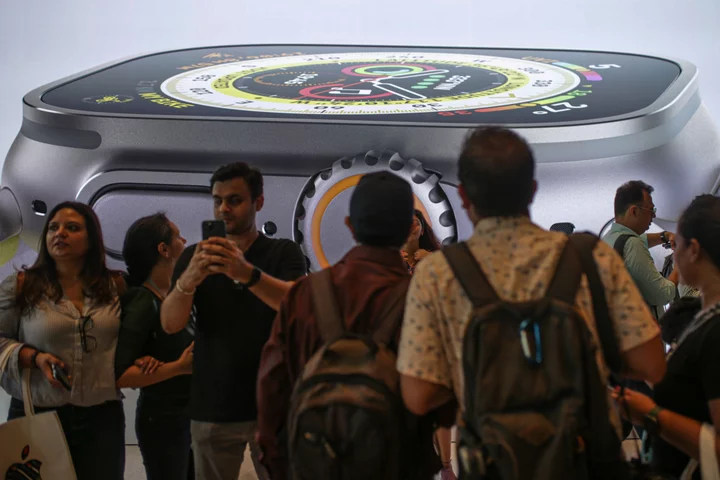Apple Inc. is testing the use of 3D printers to produce the steel chassis used by some of its upcoming smartwatches, according to people with knowledge of the matter, heralding a major change to how the company manufactures products.
The technique would obviate the need to cut large slabs of metal into the product’s shape. That would reduce the time it takes to build devices while also helping the environment by using less material, according to the people, who asked not to be identified because the plan is private.
The new approach has the potential to streamline Apple’s supply chain and kick off a broader shift. If the work with Apple Watches goes to plan, the tech giant will look to expand the process to more products over the next several years, the people said. A spokeswoman for the Cupertino, California-based company declined to comment.
To date, Apple has used a more conventional manufacturing approach for its stainless-steel watches, which account for about 10% of the product line’s total units. A process called forging is used to form bricks of material into a smaller block of metal close to the size of the device. A CNC, or computer numerical control, machine is then used to cut into the metal and create the exact design and button holes.
The new technique uses a type of 3D printing called binder jetting to create the device’s general outline at close to its actual size, or what is known in manufacturing as the “near net shape.” The print is made with a powdered substance, which afterward goes through a process called sintering. That uses heat and pressure to squeeze the material into what feels like traditional steel. The exact design and cutouts are then milled like in the previous process.
Read More: The iPhone 15 Pro Will Be Step Toward Apple’s Dream
Apple and its suppliers have been quietly developing the technique for at least three years. Over the past several months, they’ve been testing the process with steel cases destined for the Apple Watch Series 9, which is set to be unveiled on Sept. 12. The smartwatch will get a performance increase and new case colors, though its look will largely stay the same, Bloomberg has reported.
There’s no guarantee the first consumer shipments of the new steel Apple Watches will be built with the revamped manufacturing technique, but the test run suggests the company is serious about the approach. Apple also plans to apply the process to its titanium Ultra watch, but such a shift isn’t planned until 2024.
The approach benefits the environment because it only uses the approximate amount of metal necessary to create the device enclosures. In another move toward sustainability, Apple is planning to use new materials to replace leather in some of its new iPhone cases and other accessories, other people with knowledge of the matter said.
The 3D printing work is being led by Apple’s manufacturing design team, which is overseen by Rob York, a company vice president, and reports up to operations head Sabih Khan. The move to 3D-printed watch cases has been an expensive endeavor for Apple and its suppliers, but it should prove to simplify production and potentially lower costs over time. For now, the cost per watch case with the new process is in line with that of the prior method.
The work is still nascent and, for the time being, will be reserved for lower-volume products. Most Apple Watch casings are aluminum, not stainless steel. The company hasn’t made headway on mass-producing 3D-printed enclosures with that material, which is also used for Macs and iPads, as well as lower-end iPhones. But the company is discussing bringing materials that can be 3D-printed, like steel and titanium, to more devices.
The initiative is one of the first cases of using binder jetting to mass-produce a high-volume metal part. Making the Apple Watch a test case for new technology is part of a pattern for the company. For instance, Apple added steel frames to the iPhone two years after they appeared on the original Apple Watch. And this year’s high-end iPhones will use titanium a year after the material debuted on the Apple Watch Ultra.
--With assistance from Debby Wu.

